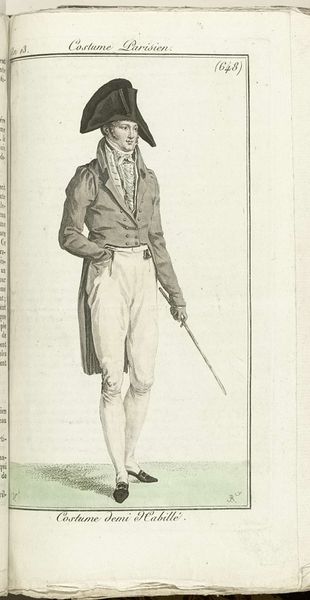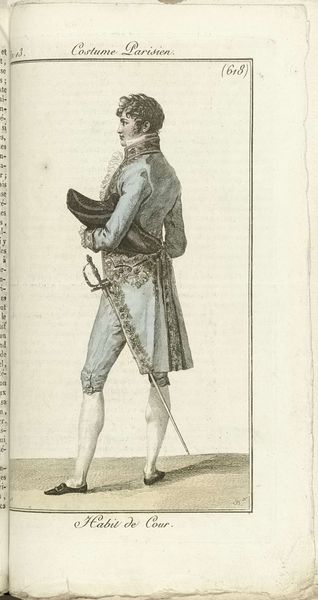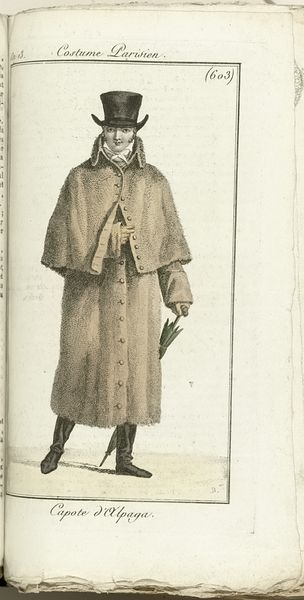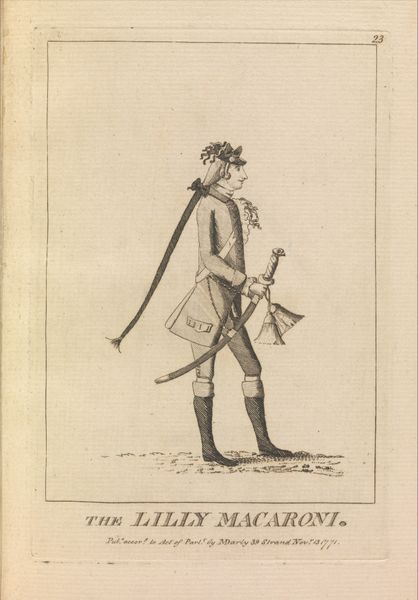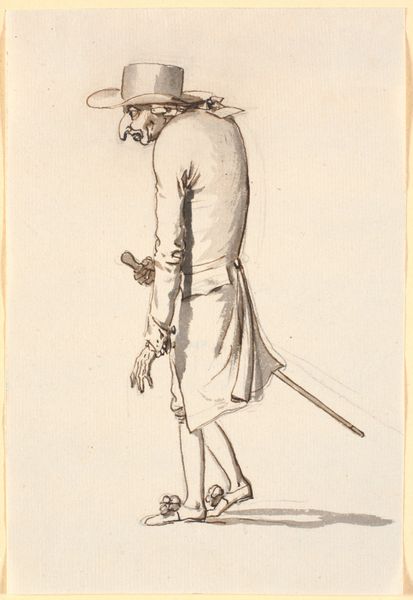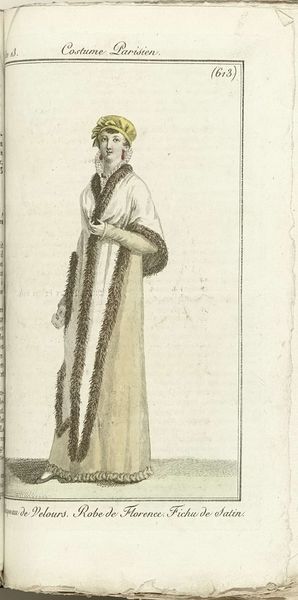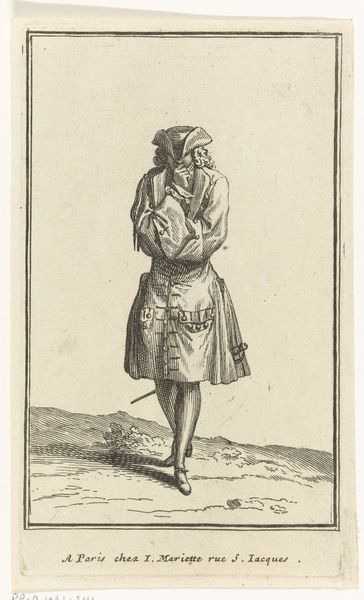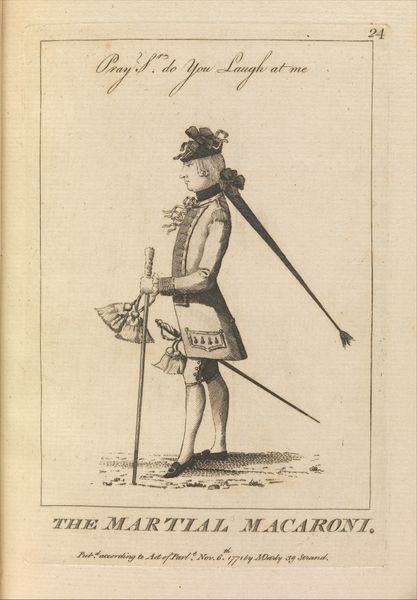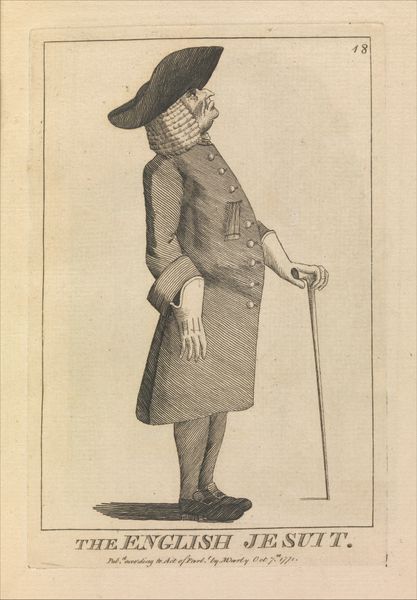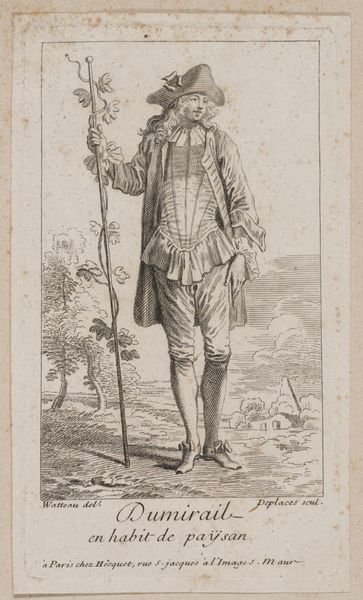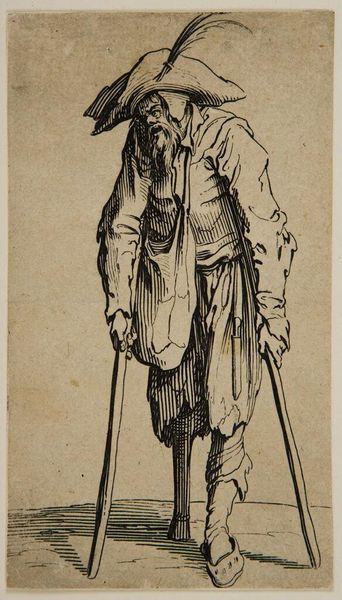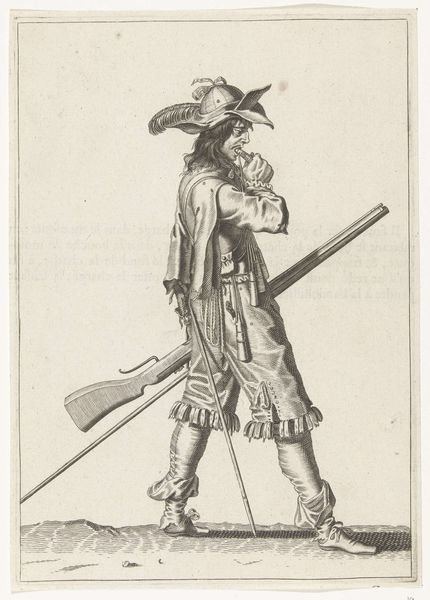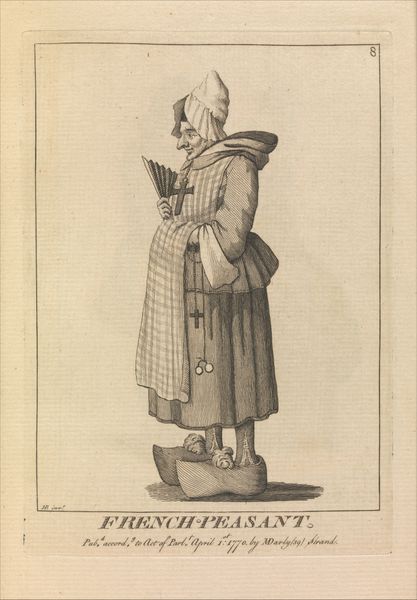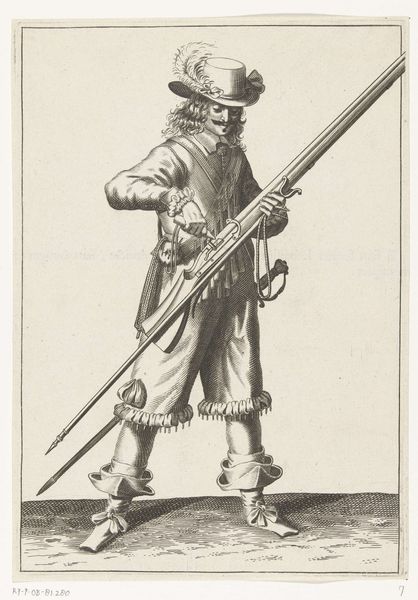
Journal des Dames et des Modes, Costume Parisien, 1805, An 13 (607) Redingote à la Charlemagne... 1805
0:00
0:00
print, engraving
#
portrait
#
neoclacissism
# print
#
engraving
Dimensions: height 181 mm, width 112 mm
Copyright: Rijks Museum: Open Domain
Editor: Here we have Horace Vernet's "Journal des Dames et des Modes, Costume Parisien, 1805, An 13 (607) Redingote à la Charlemagne...", an engraving from 1805. It features a man's attire from behind, and the long coat seems so formal. How do you interpret this work, considering its context? Curator: Well, seeing this through a contemporary lens, it's interesting to consider the politics embedded within even fashion plates of this era. This image, intended to showcase style, also speaks to social hierarchies and the male gaze inherent in depictions of luxury. Who were these publications targeting, and what ideologies were they subtly reinforcing about gender and class? Editor: That's a fascinating point. I was just thinking about the aesthetics, but you're right. It’s published under the French Republic. Curator: Exactly! It reflects a post-revolutionary desire to codify new social structures, and the return to an aristocratic idea that the wealthy should be represented as fashionable. Consider, too, how the “Charlemagne” coat connects back to historical power, potentially legitimizing Napoleon's rise by associating it with previous rulers. Were such style choices actively inclusive, or were they geared towards constructing barriers of identity? Editor: I never thought about it in that way, associating clothing with power! I was mostly focused on the details of the outfit. Curator: Think of it as visual language – what stories does it tell, and whose voices are amplified or silenced? Even an image intended for fashion has the power to reflect political statements. Editor: That completely shifts how I understand the piece! It's more than just an image of clothing; it's a historical document. Curator: Precisely! Art – even fashion illustrations – acts as a mirror reflecting societal values, hierarchies and shifts in political discourse. Editor: Thanks! I learned to see fashion not as a matter of personal taste, but as a reflection of broader socio-political dynamics. Curator: Exactly. It invites deeper explorations.
Comments
No comments
Be the first to comment and join the conversation on the ultimate creative platform.
